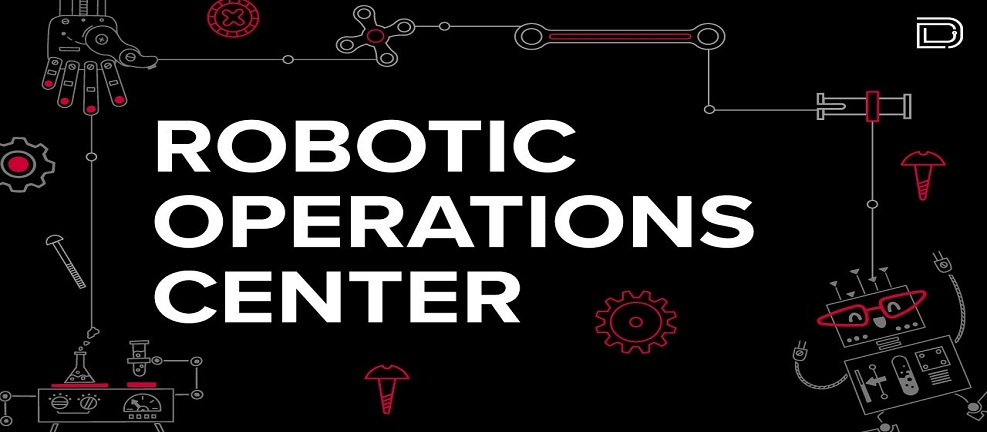How Does Robotics Operating Center (ROC) add value to Robotics Implementation
A Robotic Operations Center (ROC) is the way to better capitalize on the benefits of enterprise-wide Robotic Process Automation (RPA). ROC ensures that the RPA initiative is successful in the long term through monitoring and supporting robots as processes. It is, however, different from the conventional Center of Excellence (COE).
A Center of Excellence is a setup equipped with multiple capabilities and mandates ranging from designing and implementing standards and best practices to monitoring and controlling access to technology and the resources required. In other words, the scope of COE is to facilitate the adoption of technology to enhance business value. A ROC, in addition to being a COE, is a cross-functional setup that merges Robotics with Operations to improve the business value outside the standard organizational structure.
What Is a Robotics Operating Center (ROC)?
A typical robotic operating center (ROC), aka Robotic Operations Center, performs the functions of planning, executing, and operating RPA more than framing and following simple guidelines and standards. Processes and policies are often important factors that help organizations in deploying new technologies, but the key objective of a formal ROC structure is to ensure that the adoption of RPA will be successful and sustainable in a long term in an organization. The effectiveness of RPA is as good as the structure of the ROC.
A ROC must be structured and built around the following four broad categories of capability areas:
-
Strategic vision: The ROC must frame its objectives to help the organization track, measure, and report on automation initiatives. This includes identifying and positioning the key drivers for adoption, management of stakeholders, assessment of the use case, defining the roadmap for automation, and the methodology to measure success.
-
Governance: It must devise and follow governance and operating models for compliance with the policies, standards, and overall goals of the organization.
-
People: Businesses often face resistance to technology adoption especially when fear of losing jobs arises due to automation. An effective ROC can educate the employees about the benefits to the organization and as well employees and remove the fear through knowledge management and managing employee perceptions
-
Operations: The beneficiary of automation is mostly the operations and the positive and negative effects of automation in operations must be analyzed. ROC can effectively step in here and mandate priorities, automation roadmaps, and functional objectives to ensure that RPA is sustainable and scalable across the organization.
Framework to Setup ROC
Firstly, initiatives of this scale require the backing of key executives and senior leadership. The next step is to identify the functions covered (e.g., HR, Finance, Supply Chain, Sales, Customer Support), the number of business units, and the geographic locations involved. What follows is assessing and prioritizing the processes that are fit for automation that will benefit the organization as a whole.
Then set up your process for designing, building, testing, and deploying your digital workforce and have a business plan for the project along with methods to track your investment and ROI. It is important to decide on the ROC operating models to determine which best model Centralized ROC, Decentralized ROC, or Hybrid ROC meet your organizational goals.
How a ROC Helps Solve Core Automation Problems
A ROC can solve, among others, the following problems that frequently trouble organizations implementing automation:
-
Establishes a sustainable RPA change management program to integrate change management procedures into governance and management of automation projects.
-
Define a Robotic Development Lifecycle (RDLC) governing the tasks, sign-offs, and artifacts and set an expectation of structure and outcome.
-
Partner with security to bring key identity and date security resources to identify how policies may need to adapt for RPA.
-
Define a standard approach to reviewing use cases and establish a mechanism and controls to ensure processes are automated and in compliance with company policy.
-
Set up operational support capability for the entire organization that includes helpdesk support model, track issues, central infrastructure, and shared capabilities
-
Develop a common definition of benefits and prioritize which benefits need to be tracked and measured.
Overall Organizational Goal of Adopting the RPA
The purpose of setting up a ROC is to lay the foundation for automation to unlock the potential business value generated from transformation. Organizations that have a functioning ROC will help enhance the delivery and excellence experience and improve the effectiveness of the services it delivers. When setting up a ROC, it’s important to factor in the benefits RPA can bring to the organization with the commitment to enabling delivery, excellence, and support in addition to controlling. That said, small businesses will find it difficult to set up a ROC. The option for them is to subscribe to a ROC set up through platforms that help businesses to manage tasks without hiring full-time employees.




